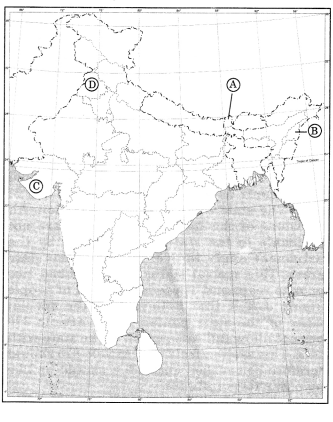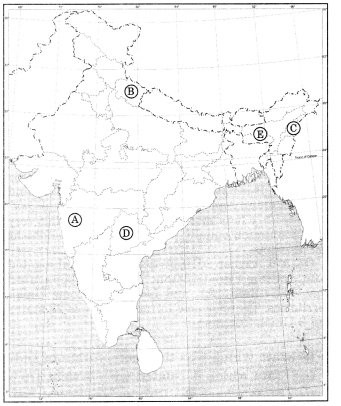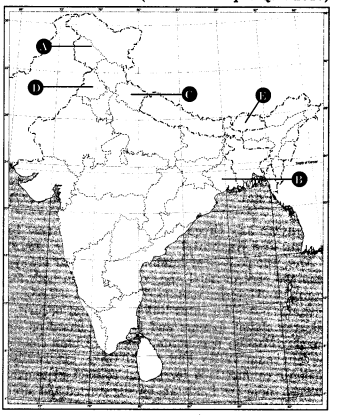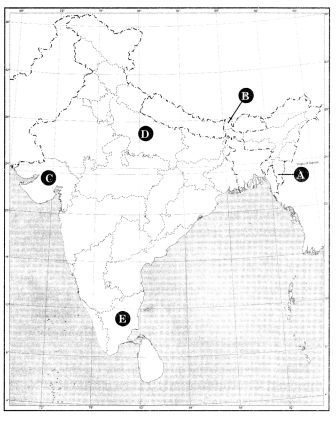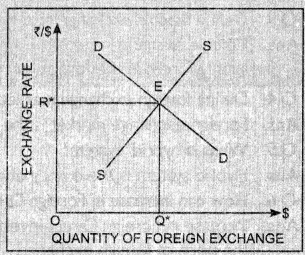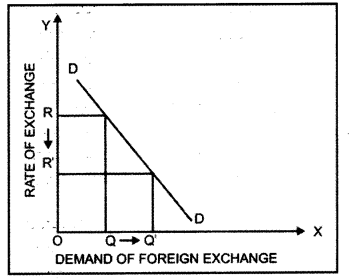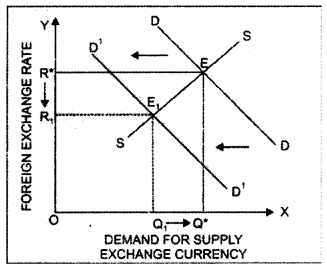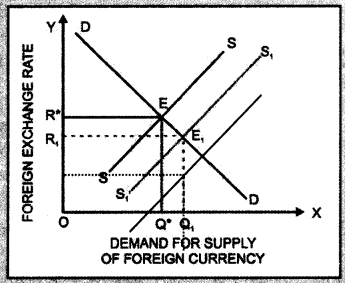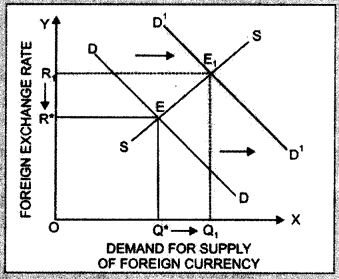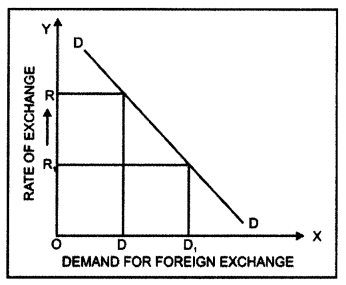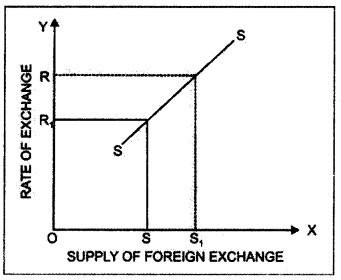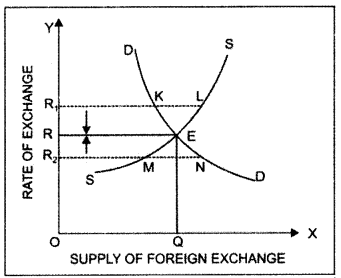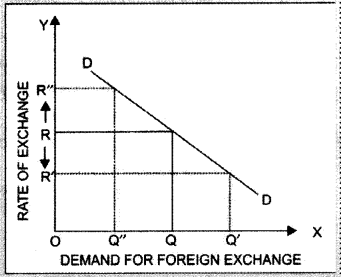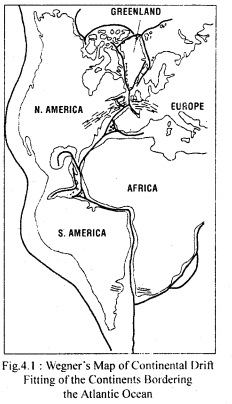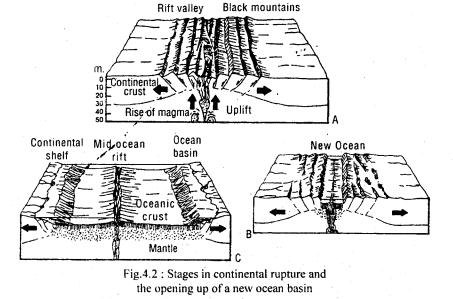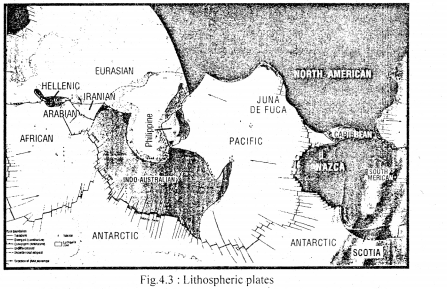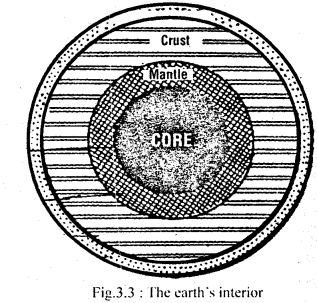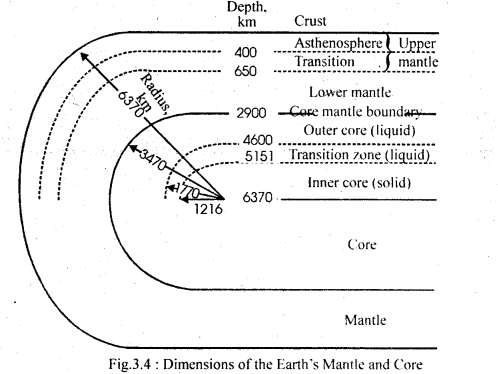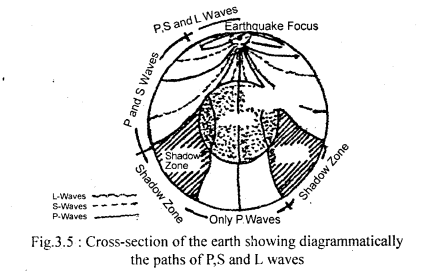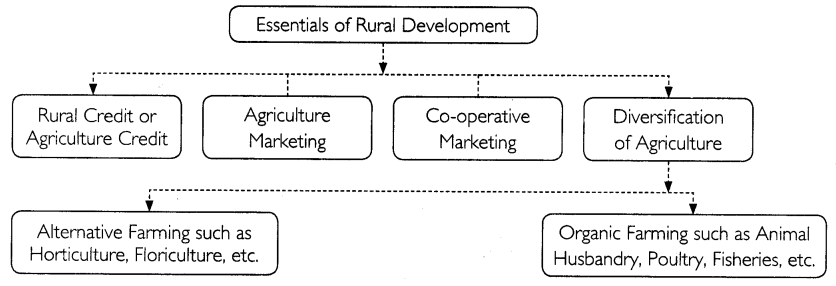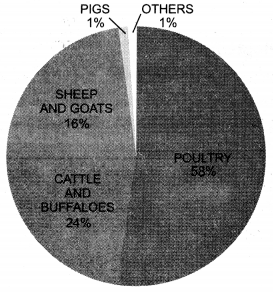Here we are providing Class 12 Sociology Important Extra Questions and Answers Chapter 4 The Market as a Social Institution. Sociology Class 12 Important Questions are the best resource for students which helps in class 12 board exams.
Class 12 Sociology Chapter 4 Important Extra Questions The Market as a Social Institution
The Market as a Social Institution Important Extra Questions Very Short Answer Type
Question 1.
What is meant by the Market?
Answer:
In economics, a place where the exchange of things takes place or where things are bought or sold is called a market. But in sociology, markets are social institutions that are constructed in culturally specific ways.
Question 2.
What is meant by Market Economy according to Adam Smith?
Answer:
According to Adam Smith, the market economy is made up of a series of individual exchanges or transactions, which automatically create a functioning and ordered system. This happens even though none of the individuals involved in the millions of transactions had intended to create a system.
Question 3.
Give the meaning of free market.
Answer:
Adam Smith supported the idea of the free market. It is a market that is free from all kinds of regulation whether by the state or otherwise. If any regulation would be there then it would have a negligible impact on trade.
Question 4.
What is meant by the policy of Laissez-Fairer?
Answer:
The meaning of the French word ‘Laissez-Fairer’ is to leave alone or let the market be it means that the market should be free from the State’s control and no interference of government would be there in it.
Question 5.
What is meant by Weekly Markets?
Answer:
Weekly markets are held in tribal areas which bring together people from surrounding villages, who come to sell their agricultural or other products and to buy manufactured goods and other goods and other items that are not available in their villages.
Question 6.
What is meant by the Short-term Market?
Answer:
Short-term Market is that state of the market in which if the demand of any commodity increases then the produce of that thing gets time to increase its supply to a certain extent. This extent or limit is the capacity of the godown of that producer to store that thing. The value of this market is known as market value.
Question 7.
What is meant by Long-term Market?
Answer:
A long-term Market is that state of the market in which the supply of anything can be increased or decreased according to the demand of that thing. Balance can be maintained in both demand and supply in this type of state. The value of this market is known as general value.
Question 8.
What is meant by the Jajmani system?
Answer:
This was a system existing in rural areas in which different castes provided their services to upper castes. In lieu of their services, they were being provided some portion from agricultural produce or some other things.
Question 9.
What is meant by Exchange?
Answer:
In common sense, the exchange is the giving and taking of things and services between two parties. In economics, the exchange is the legal, optional, and mutual giving and taking of goods and money.
Question 10.
What is commodification? Explain with examples. (C.B.S.E. 2010)
Answer:
Commoditization occurs when things that were earlier not traded in the market become commodities. For example, labor or skills become things that can be bought and sold.
Question 11.
What was Hundi?
Answer:
Hundi was a bill of exchange, like a credit note, which allowed merchants to engage in long-distance trade. A merchant in one part of the country could issue a hundi that would be honored by a merchant in another place.
Question 12.
What is liberalization?
Answer:
liberalization is the lifting of unnecessary restrictions in a controlled economy. The lifting of unnecessary restrictions from industries and businesses, so that economy could become more competitive, open and progressive, is known as liberalization. It is an economic process that brings changes in society.
Question 13.
What is Globalisation?
Answer:
Globalization is that process in which the economy of one country is attached to the economies of other countries. It means that the unrestricted exchange of things, services, capital, and labor of one country with other countries is known as globalization. There is an open and free exchange of trade between different countries.
Question 14.
What are the reasons for liberalization?
Answer:
- To develop more means of employment so that people could get enough employment.
- To produce more and more competition among industries so that consumers should get more and more profit.
Question 15.
What is Privatisation?
Answer:
Socialist and Democratic countries have a mixed type of economy that has public enterprises, under the direct control of the government. Sometimes the government gives control of these public enterprises to private companies so that they could earn more and more profit. This process of giving public enterprises to private hands is known as privatization.
Question 16.
What were the positive results of globalization over India?
Answer:
- India’s share in world export has been increased.
- Foreign investment in India has been increased.
- India’s foreign reserve has been increased.
Question 17.
What changes have taken place due to marketization? (C.B.S.E. 2017 (OD))
Answer:
Changes due to marketization –
- Removal of economic controls (deregulations)
- Privatization of industries
- Removing government control over wages and prices
- Lead to better economic growth
Question 18.
In what way consumption pattern is related to a status symbol? (C.B.S.E. 2017 (D))
Answer:
Relation of Consumption pattern to a status symbol – Things people consume, use, indicate their status in society; their lifestyle, etc e.g. brand of cell phone, a model of car, decoration of home, way of dressing, leisure activities, etc.
Question 19.
Why coastal cities were favored by the colonial rulers? (C.B.S.E. 2017 (D))
Answer:
They were the primary link between the economic centre and core in Britain and periphery margins in colonized India (Coastal cities such as Bombay, Calcutta & Madras were developed by the British in India. This may be mentioned as Mumbai, Kolkata, Chennai also.)
The Market as a Social Institution Important Extra Questions Short Answer Type
Question 1.
What are the main objectives of liberalization?
Answer:
- the Main objective of liberalization is to produce more opportunities for employment.
- To attract foreign investment to produce employment opportunities.
- Making Indian companies competitive in the Indian market.
- To give more and more freedom to the private sector.
- To increase the production capacity of the country.
Question 2.
Give some features of liberalization policy.
Answer:
- Except for few things, the policy of taking licenses was eliminated so that all the industries could develop very easily.
- Privatization of public enterprises was started so that the deficit making enterprises could be changed into profit-making enterprises.
- Very few industries have been left for the public sector so that all the industries could be encouraged.
- The limit of foreign direct investment has been increased. In many sectors it is up to 51%, in many, it is 74% and in many sectors, complete investment has been permitted.
Question 3.
Give some characteristics of Globalisation.
Answer:
United Nations’ development program has given four characteristics of globalization and these are:
- New tools and things have come for people in globalization because large companies of the world are going in every country.
- New markets have been opened for companies because, in globalization, companies can do free trade in any country.
- New organizations sire coming forward to do works of globalization like the Red Cross, World Trade Organization, etc.
- New laws and rules are coming forward due to globalization like jobs on contract instead of permanent jobs.
Question 4.
In how many phases process of liberalization in India can be divided?
Answer:
The process of liberalization in India can be divided into 4 phases:
- The first phase of 1975-1980
- The second phase of 1980-1985
- The third phase of 1985-1991
- The fourth phase of 1991 onwards.
Question 5.
Give four principles of Globalization
Or
What are some of the processes included under the label globalization? (C.B.S.E. 2013)
Answer:
- The opening up of the economy of the country for foreign investment.
- To reduce custom duty up to a maximum extent.
- Disinvestment of public enterprises.
- To encourage investment in the private sector.
Question 6.
What are the changes that came in tribal weekly markets?
Answer:
Changes came in tribal weekly markets with the passage of time. These areas were connected with regional and national economies during the colonial period. Roads were made in their areas and their areas were made open for outsiders so that minerals and forest wealth could be taken out. That is why non-tribal people, traders, and moneylenders reached to their areas. New goods came into their markets. Forest produce was sold to outsiders. Tribals were kept as laborers in mines and tea-gardens. Tribal started buying outsider goods by taking loans and they became poorer.
Question 7.
What is meant by Production?
Answer:
Production is that process with which anything is made to fulfill any need of the person. It can be defined in the form of using anything. Many things are required to produce anything like natural resources, human force, labor, technology, entrepreneur, etc. In this way production is a process in which man produces anything to satisfy his needs and then, he uses that thing.
Question 8.
What do you mean by Consumption?
Answer:
Consumption is also necessary with production because, without consumption, production is not possible. Consumption means to use anything and to use means that quality that makes anything able to satisfy the needs of the person. It is the main function of every society to regulate and control the consumption for society.
Question 9.
What is Distribution?
Answer:
For a layman, the meaning of distribution is to take anything from one place to another and to sell that thing. But in economics, distribution is that process with which the actual and complete value of anything is distributed among those persons who have contributed to the production of that thing. Different persons and groups have their own specific contribution in the production of anything and they should be rewarded for that. In this way, the money or reward given to them is distributed. For example, rent to the owner of the land, labor to laborer, interest to the person who has invested money, tax to the government. All of them get a share in this form.
Question 10.
What do you mean by Capitalism?
Answer:
Capitalism is an economic system in which private property is of great importance. Production in capitalism is on large scale and we can see stiff competition among different capitalists. Capitalist tries to get more profit because of which he invests his money. This money and credit are of great importance in capitalism. The biggest feature of capitalism is the exploitation of laborers.
Question 11.
Write characteristics of Capitalism.
Answer:
- Production in capitalism is on large scale.
- The base of capitalism is private property.
- There is a lot of competition among different classes in capitalism.
- Capitalist invests his money to get more profit.
- The exploitation of laborers is there in capitalism.
- Money and credit are of great importance in a capitalist economy.
Question 12.
In agrarian societies, periodic markets are a central feature of social and economic organizations. Explain. (C.B.S.E. 2012)
Answer:
In most agrarian or peasant societies around the world, periodic markets are a central feature of social and economic organization. Weakly markets bring together people from surrounding villages, who come to sell their agricultural or other products and to buy manufactured goods and other items that are not available in their villages.
They attract traders from outside the local area, as well as moneylenders, entertainers, astrologers, and a host of other specialists offering their services and wares. In rural India, there are also specialized markets that come up at less frequent intervals, for example, cattle markets. These periodic markets link different regional and local economies together and link them to the wider national economy and to towns and metropolitan centers.
The Market as a Social Institution Important Extra Questions Essay Answer Type
Question 1.
What is Globalisation? Explain briefly.
Answer:
The process of Globalisation is a wide economic process that can be seen in all societies and countries. Different countries have free trade and economic relations in this process. Actually, not even a single country is completely self-dependent to fulfill its need. It has to depend upon other countries to fulfill the basic needs of its people. With this, even other countries are also dependent upon each other to fulfill their needs.
Because of this mutual dependence, mutual relations were increased in different countries and one idea came into being to increase relations of free trade in each other’s country. This idea of increasing economic relations and free trade is given the name of Globalisation. The concept of Globalisation gave rise to the concept of liberalization in which different countries are opening their doors for other countries to have duty-free trade relations among them.
The concept of Globalisation is not very old. It is as old as 15-20 years which has taken the whole world in its fold. That is why the world is shrinking these days. We can get the foreign-made goods while living in our small town or city. We can see any sector of the country. For example, many foreign cars like Mercedes, General Motors, Rolls Royce, Ferrari, Honda, Mitsubishi, Hyundai, Skoda, Toyota, etc. came to India, which were not available in the decade of 1980s.
It is happening because of Globalisation and liberalization that the market of our country is opened for foreign companies. In this way, a lot of foreign-made goods and Indian goods are available in our country. It is Globalisation in which different countries are opening their doors for foreign companies and are encouraging free trade. These days the world is shrinking and now it is just like a small village or town. The government is increasing Foreign Direct Investments (FDI) in every sector. This is called Globalisation.
Question 2.
Explain briefly the different characteristics of Globalisation.
Answer:
1. World Trade. The first and necessary condition of Globalisation is world trade. It is the main base of trade in the world. It unites the people of different sectors living in different countries and gives them business. For example, India has a lot of surplus tea. That is why different countries of the world are importing tea from India. In the same way, almost all the countries of the world depend upon Arabian countries for crude oil. In this way, with the exchange of goods and because of trade they are coming closer to each other. People of India depend upon Arabian people and they depend upon us. World Trade and Globalisation has been increased.
2. Economic globalization: Globalisation has established a new economy in the world. Now the economy of one country depends upon the economy of another country. That is why the concept of the world economy came into being. Different countries unite with each other because of the economy and the exchange of cultural traits starts between them. Investment, exchange of division of labor, specialization, production, consumption, etc. have an important role in this business. Economic globalization has encouraged capitalism. Now, people are thinking even for international economy and structure.
3. Globalisation of market: Globalisation has increased the market to a great extent. Now, globalization of the market is not being done only on the basis of production but is also on the basis of consumption. Companies are producing things while keeping in mind the market of other countries or international markets. Even some countries depend on others for consumption. In this way, production and consumption depend upon the foreign market. With this, the business with other countries increases and foreign exchange comes into the country. In this way, the market depends upon foreign countries. We can find a number of foreign-made goods in our market. Even the eatables are available in markets. In this way, the market is expanded with globalization.
4. Division of labor: Globalisation has encouraged the division of labor. Now, people are doing many courses to go to a foreign country. For example, people are doing a number of computer courses so that they could earn money in a foreign country. We can see many types of advertisements in newspapers that specialists in different countries are required. Division of labor is encouraged because specialists are in great demand in different countries of the wound. It is the feature of globalization that has encouraged the division of labor.
5. Migration of laborers to other countries: Another feature of globalization is the migration of workers from one country to another country in search of work. Generally, people, specialists in different sectors from South Asian countries are going to western countries for work because they think that they can earn more in western countries. Workers of different countries are working in foreign lands and are earning money. In this way because of globalization people of different countries have been able to migrate to other countries.
6. World economy: Another feature of globalization is the encouragement of the world economy. Now the economy of one country is not restricted only to that country because its economy is affected by the economies of other countries. With the increase in trade, economies depend upon each other. In this way because of inter-dependence, the world economy and world trade have been increased.
Question 3.
What is the impact of Globalisation on the Indian Economy?
Answer:
1. Increase of the Indian Share in world export: With the process of globalization, the Indian share in world export has been increased. Indian goods and services in the decade of 1990-2000 have been increased by 125%. In 1990, the Indian share in the world’s export of goods and services was 0.55% which was increased up to 0.75% in 1999.
2. Foreign investment in India: Foreign direct investment is an important feature of globalization because foreign investment increases the capacity of production of any economy. Foreign investment in India is continuously increasing. From 1995-96 up to 2000-01, it has been increased by 53% and during this time 500 crores have been invested in India annually.
3. Foreign Exchange Reserve: Foreign exchange is necessary for import. In June 1991, the foreign exchange reserve in India was 1 Billion Dollars which was enough only to fulfill the needs of only two weeks of the country. After this India adopted new economic policies. Globalization and liberalization were encouraged because of which foreign exchange reserve was increased very quickly. Now, the foreign exchange reserve is near 350 Billion Dollars. ‘
4. Growth of Gross Domestic Product: Because of globalization the gross domestic product (GDP) of the country has been increased. In 1980, it was 5.63% which was increased to 5.80% in 1990. Now, it is around 7%.
5. Increase in Unemployment: Because of globalization, unemployment in India has been increased. During the decade of 1990-2000, the economic problems came in Mexico, South Korea, Thailand, Singapur, Indonesia, Malasia and it was because of globalization.
That is why millions of people lost their jobs and they had to live below the poverty line. At the start of the 1990’s the rate of unemployment was 6% which was 3.8% in 2011.
6. Impact on Agriculture: The share of agriculture and its related activities in the Gross Domestic Product of the country is 14%. But it is 2% in the U.S.A., 55% in Japan and France. If we look at the labor force then India’s 69% labor force is related to agricultural functions but the labor force in the agricultural sector in U.S.A. and U.K. is only 2.6%. In the near future, it is necessary for India to open its market for world companies in the agricultural sector which is in agreement with W.T.O.
7. Educational and technical development: Globalisation and liberalization have exerted a great impact on the education and technology sector which has seen a revolution. The world has been shrinking due to means of transport and communication. Internet and computer have brought a revolution in this sector.
8. Change in the form of Classes: Globalisation has changed the form of different classes. In the 20th century, only three main classes i.e., higher class, middle class, and lower class were there but now the number of classes has been increased.
9. Privatization: One of the good effects of globalization can be seen in the form of Privatisation. Many public sector undertakings (P.S.U.’S) like V.S.N.L., I.P.C.L., NALCO are now in the hands of private parties because of which they are earning huge profits.
10. Development of Industries. Foreign direct investment is very helpful in achieving a higher rate of economic development. It gives not the only advantage to industries but consumers are getting products of better quality and better technology. It gives motivation to Indian industries to compete with foreign companies in the international market.
Thus, the process of globalization is very good in bringing social change and giving good quality products to consumers in India.
Question 4.
What is meant by liberalization? Which problems occurred due to liberalization?
Answer:
Meaning of liberalization. Lifting up of unnecessary restrictions of the controlled economy is liberalization. Lifting up unnecessary restrictions from businesses and industries, so that economy could become more competitive and open, is called liberalization. liberalization is a process in which different countries of the world are motivated to provide such facilities with which free business and trade could develop among them.
One of its aims is to reach the objective of better international economic relations. This process encourages wide business and economic relations between different countries of the world. This policy increases the working capacity of the economy and private enterprises have the ability to give better results than public enterprises.
Problems of liberalization. This process brought up many problems in India which are given below:
1. Increase in Unemployment. The unemployment rate in India was 6% in 1990, which became 7% in 1999 and it was 3.8% in 2011. It is only the result of liberalization. 36% of the total population of India still lives below the poverty line because they lack basic amenities. Domestic industries are directly related to employment because they give a lot of employment to a number of people.
If industries will increase then more and more people will get employment. But if local industries will be destroyed then not only unemployment but poverty will also increase. The process of liberalization is going on for more than is the year in our country. Large industries are coming forward but domestic and cottage industries are destroyed by these larger industries. It has increased unemployment.
2. Evil consequences of liberalization. Industries begin to throw out their employees from factories with this process. When the policy of liberalization was implemented then it was told that this process will solve all the problems of the country. But even after such a long time not much impact has been seen on our economy. 36% of the total Indian population still lives below the poverty line. Yet India got technical advantage through this but certain areas are there which have faced evil consequences of this process.
3. Increasing pressure of foreign debt. The first era of economic reforms was started in 1991 and went until 2001. The second era was started in 2001. During the second era, it was thought that the rate of economic growth of the country will increase but nothing happened. Steps on the way of economic progress and economic reforms became slower. The aim of economic growth was kept at 8% but it fluctuated all the time. The pressure of foreign debt is increasing. India has to pay 349.5 billion dollars of foreign debt in 2012 and that is why every Indian is under the debt of foreign countries. All this has happened because of the process of liberalization.
4. Decrease in Export and Increase in Import. Export of India has also been reduced by process of liberalization and also import has increased. Import as compared to 1991, was increased in 1996 and export was reduced. Its reason was that western things came into our country and the people started to use those things. That is why imports were increased and export was decreased. Balance of business was also destabilized. Increasing import has adversely affected local industries. Western things are durable and less expensive. That is the reason why local industries are adversely affected.
5. Reduction in Value of Rupee. The value of the rupee has been decreased to a great extent due to liberalization. The value of one dollar was Rs. 18 in 1991, it became Rs. 36 in 1996 and Rs. 47 in 2001. Now, it is around Rs. 67. It is all because of liberalization. The decline in the monetary value of a country led to an increase in inflation which is also not good for poor people. It might be profitable for developed countries but is disastrous for developing countries. In this way value of the rupee has been declining due to liberalization.
Question 5.
What do you know about capitalism? Write in detail.
Answer:
Capitalism is an economic system in which private property is of great importance. Capitalism does not its an advanced stage at once but it develops slowly. To see its development we have to study it from ancient societies.
In ancient societies, the system of exchange of goods was there. There was no concept of profit at that time. People were not collecting things for profit but were collecting for those days when those things will become unavailable. The business system was generally dependent upon the exchange of service and goods. No one was aware of economic factors like labor, investment, individual profit during those times.
In the middle ages, business and commerce developed a bit. Yet, in the beginning, the business was based on the system of exchange and gradually money became the medium of business. It has given a type of motivation to business and commerce because of which the importance of money, gold, silver, and coin was increased. Money was, yet, not the property, but was the symbol of property. It has a complete effect on the production forces and features. According to Simmer, the institution of money has affected all parts of life when it became systematic in modern western society.
It has given the freedom to owner and servant and also affects the things and services and buyers and sellers because with this formal relations came into being in both sides of the business. According to Simmer, money has brought a lot of changes in the philosophy of our life. It has made us practical because now we are measuring everything in terms of money. Social relationships and social contact have become informal and formal. Human relationships have become cold.
At the beginning of modem times, economic activities were regulated by governmental forces. In this, we can see the shadow of moving forward of European people under their monarchs. At this time economic activities were regulated by the political authority so that the king’s profit is increased and treasure should be filled. The country was running under the supervision of businessmen and the businessmen were engaged in earning money like an economic organization. Production forces were also regulated by business laws.
After this, the industrial revolution came, which changed the ways of production. Business policies were unsuccessful in doing the welfare of the people. For the production of more things policy of ‘Laissez Fairer was adopted. According to this policy, there will be no interference in economic matters. According to this, any person can see his individual interests, there was no pressure and burden on him. The state has stopped interfering in economic matters. According to Sumner, State should remove all the restrictions which were put on business and commerce and it should remove all the restrictions which were put on production, exchange, and accumulation of money. Adam Smith has given four concepts at this moment:
- The policy of individual interest.
- Policy of Laissez Fairer
- Theory of competition, and
- To see a profit.
These concepts have put a great effect on that particular time. Under the effect of these rules and because of the industrial revolution new system of property and ownership of production came into, being which was given the name of capitalism. Because of the industrial revolution, the domestic system of production was changed into the production in factories. In factories, every work has been divided into small parts and every laborer was doing small work. That is why production was increased.
With the passage of time, big industries came into being. Big owner corporations of these industries came into being. In this new system of production and exchange, owners of means of production were different individuals and they had no social responsibility. The property was completely private and it was totally free from the restrictions of state, religion, family, and other institutions. Owners of the factories were free to do anything. Their main aim was profit. They were not restricted to produce anything without profit. The way of production was profitable and the government had adopted the policy of no-interference and it helped the owners of means of production in this way.
Question 6.
What is meant by the Market? Explain the main features of the Market.
Answer:
In common everyday usage, the word Market may refer to particular markets such as the fruit market, the wholesale market, the vegetable market. It means we relate it with the economy. But it is also a social institution. Sociologists are of the view that markets are social institutions that are constructed in culturally specific ways. Markets are generally organized or controlled by particular social groups or classes and have specific relations to other institutions, social processes, and structures. From an economic point of view, only economic activities and institutions are included in markets. It means that only mutual exchange or contracts take place in the market which is based upon money.
In both Economics and Sociology, a market is understood to be an area over which any well-defined commodity is exchanged between buyers and sellers. Such commodities are considered to be of two kinds-goods and services. The total amount of a commodity produced and available for purchase is referred to as the supply of the commodity, while the total amount being sought for purchase is termed the demand.
(Features of Market)
The following are the main features of a Market:
1. Mutual exchange: First and most important feature of the market is a mutual exchange. In general, the market is based on mutual exchange. In this, either things are given for things, or things are given for money, or services are given for things. If mutual exchange would not be there would not have been a market.
2. Continuous process: The market is a continuously changing institution. We can observe any of the society like modern society, rural society, or tribal society. The market is available in all societies. If anyone wants to run the house then he is required to go to the market to buy things. It leads to regulation of the market as well.
3. Formal relations: Another feature of the market is that people have formal relations among them. Yet, people know very well about shopkeepers of the market but their mutual relations are limited to a certain extent. If they have good relations among them, even then they cannot exert a great impact on market rules. The shopkeeper will definitely take his profit. It hardly matters whether it is less or more. Relations in the market could be made between two strangers.
4. Medium: Medium of exchange is used according to market rules. This medium could be in any form like things, money, or services. The number of goods could be reduced or increased according to the value of the medium. Contracts are always based on the quantity of medium and mutual exchange that takes place according to this.
5. Relations based on a contract: Relations in the market are always based on the contract. These relations are always formal. Rules of a contract are applicable on all markets in one form or the other and everyone is bound to accept these rules. In modem industrial society, relations based on contract are in demand.
